Tuesday, 23 April 2024
Opening Keynote, “Future Connectivity for Aviation”
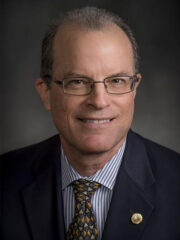
Dr. Todd Citron, Chief Technology Officer, The Boeing Company
Dr. Todd Citron is the chief technology officer of The Boeing Company, responsible for developing and executing Boeing’s technology strategy. This includes Boeing research & technology (BR&T), subsidiary Aurora Flight Sciences, and AvionX that are helping create the future by developing and transitioning critical technologies, delivering ground-breaking products, and providing daily program execution support across Boeing. It also includes the engineering oversight and support to the joint ventures at Wisk and SkyGrid. These global teams work in five U.S. and seven international research centers.
Prior to his current role, Citron was vice president of engineering for Boeing defense, space & security, where he was responsible for ensuring world-class technical integrity for all defense, space & security products and services. he led a 20,000-person international engineering organization that included teams across each division of the business.
Citron was previously vice president and chief engineer for defense, space & security development. there he managed engineering support for key focus programs in the business’s portfolio, improving execution through early deployment of critical resources and proven processes from across the company. His responsibilities also included creating and implementing a strategy to enhance engineering quality and affordability.
Plenary I: Challenges and Opportunities of Harmonized & Interoperable Integrated CNS
Air Navigation Services are being coordinated at an international level to assure the safety and regularity of flight. This includes communications, navigation, and surveillance. Speakers in this plenary include Airbus, Boeing, EASA, EUROCONTROL, FAA, and ICAO.
The aviation community continues to map out a path forward towards a common set of future CNS capabilities for achieving required performance, interoperability, and harmonization. However, if the past is any indicator of the future, we will find this task will be confronted with many challenges. Whether it is the difference in timing of needs or variations in regional requirements, agreeing on a common set of technologies supporting those capabilities has proven almost insurmountable. With the rapid evolution of commercial offerings, we now find that achieving interoperability while using different technologies may be made much easier than before. These new technologies also allow us to possibly evolve these CNS functionalities like never before, leading to the need for fewer radios and more efficient use of our limited aviation spectrum while achieving a more performance-based set of requirements. This plenary will look at where the aviation community is heading with respect to communication, navigation, surveillance, and spectrum and how these new offerings are going to get us there.
- Session will set the scene for the other ICNS 2024 plenary sessions providing an overview of significant CNS developments while focusing on the challenges and opportunities.
- Panelists will address/discuss importance (impact) of harmonization and interoperability in current and future CNS developments and deployments.
- Panelists will discuss the ongoing CNS industry planning/evolution/developments as well as address certification needs and approaches.
- Session will consider the move to use performance-based criteria versus a focus on particular technologies, thus introducing the opportunity for greater use of commercial links with smart routing.
Co-chairs
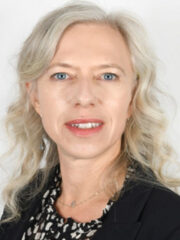
Véronique Travers Sutter, Head of iCNS Unit, EUROCONTROL
Véronique Travers Sutter is an aeronautical engineer with over 25 years of experience in CNS avionics, trajectory management and certification expertise. She was previously working for Airbus where she was leading the SESAR program contribution and more recently serving as head of Airbus’ transformation and system integration. Now part of EUROCONTROL NM team, she is the head of iCNS team, focusing on maintaining, evolving, and implementing the iCNS strategy and objectives. Together with her new team, she will be working on European CNS infrastructure projects and products supporting the technical performance of the European CNS infrastructure. This also includes coordinating the allocation of pan-European scarce resources, such as spectrum and radio frequency bands, etc. and working closely with the SESAR deployment manager (SDM) and the SESAR 3 Joint Undertaking on research and innovation and on supporting the ATM Master Plan.
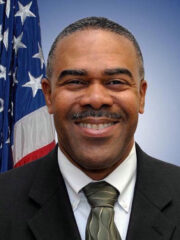
Malcolm Andrews, Acting Director, Air Traffic Control Facilities & Engineering Services, AJW-2, FAA
Malcolm G. Andrews currently serves as the acting director, Air Traffic Control Facilities & Engineering Services for the Federal Aviation Administration (FAA). In this role, he leads an organization of over 1700 employees who are responsible for the safe and effective implementation and lifecycle management of the facilities and engineering infrastructure of the National Airspace System (NAS). Specifically, he is responsible for engineering services, facilities and security services, environmental services (EOSH) & designated DASHO and power services.
Previously, he served as the director of enterprise services, AJM-3, in the Program Management Organization of Air Traffic Organization. As director, Mr. Andrews was responsible for overall management of more than 60 programs, including those that are part of the FAA NextGen initiative, working to improve air traffic in the National Airspace System. In this role, he oversaw the acquisition, implementation, and execution of the systems and services that tie ground systems and aircraft together through communications, navigation, weather, data communications and aeronautical information, and unmanned aircraft systems. He also serves on key FAA decision-making bodies including the FAA Acquisition Executive Board, ATO Cyber Security Board, and the Executive Steering Group of Space-Based Positioning Navigation and Timing National Executive Committee. Mr. Andrews brings more than 30 years of engineering and acquisition management experience with the FAA and the Department of the Navy.
Panelists

Pascal Luciani, Deputy Director ANB, ICAO
Pascal Luciani is an engineer with 25 years of experience in transport in the civil administration of France and international organizations, 15 years of which in civil aviation.
Prior to joining the International Civil Aviation Organization (ICAO) as deputy director for air navigation and aviation safety, he served as deputy director for the French Safety Oversight Authority from 2018 to 2022. From 2014 to 2018 Pascal was the aviation counselor at the Permanent Representation for France with the European Union, covering all fields of aviation and was also responsible for shipping. In 2008 he was tasked with creating the Sustainable Aviation Department, DGAC, France, which he headed from 2008 to 2013.
Pascal’s experience in public service before joining the aviation sector includes road infrastructure and road safety (1997 – 2001) and port infrastructure and development (2001- 2005). He also served for two years as technical advisor for the Ministers of Environment and Transport (2005 – 2007). Pascal also headed the modernization mission in charge of supervising the merging of the Ministries of Transport and Environment in France (2007-2008).
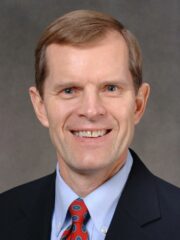
Dr. Chip Meserole, Director, Airspace and Operational Efficiency, Boeing
Dr. Chip Meserole manages the Airspace Operational Efficiency team in Boeing Research and Technology. The team’s responsibility is to advance new capabilities in air traffic management and flight optimization that enhance system capacity, efficiency, and sustainability globally. Its emphasis is on emissions reduction for aviation sustainability and on integrating autonomous aircraft into the airspace.
This group executes the company’s contracts with the FAA, NASA, and SESAR in this domain; creates flight optimization business concepts for Boeing Global Services Digital Aviation Solutions; and conducts R&D in air-ground integration and network-enabled operations. It has activities in Seattle, Washington, D.C., Spain, Brazil, India, Australia and China. He joined Boeing in 1984 and worked on space system and launch vehicle development before moving into its air traffic management initiative in 2001. He is an associate fellow of the American Institute of Aeronautics and Astronautics. He has a bachelor’s degree from Princeton University, a master’s from Cornell University, and a doctorate from MIT, in aerospace and mechanical engineering.

Philippe Masson, Program Manager, ATM Sustainability, Airbus
Philippe Masson is a program manager at Airbus developing innovative concepts of operations for sustainable aviation. He is building programs with the operational ecosystems and defining how these concepts can become viable and standardized. He is today more specifically leading large SESAR3 consortiums alignment on wake energy retrieval and non-CO2 effects mitigations.
He has a 20 years of air traffic management background, in military and civil air traffic development programs with program manager and technical director roles. He has been working for different programs for a better integration of aircraft capabilities into operations (data link 4D trajectories, enhanced surveillance, ATM conflict detection and resolution), and drones (U-Space).
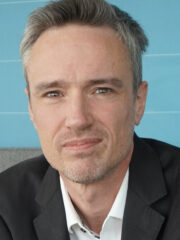
Ludovic Aron, U.S. Representative, European Aviation Safety Agency (EASA)
Ludovic Aron is the European Union Aviation Safety Agency (EASA) representative in the United States of America, based in Washington D.C. He has over 20 years of experience in aircraft design engineering and certification. After his military service in the French Navy, he joined Dassault-Aviation, working as an aircraft systems engineer, first in the Military Customer Support division and then in the Business Jets division. After 10 years, Ludovic joined new French airplane maker Sky Aircraft (GECI Aviation Group) as head of Aircraft Systems. In 2013, Ludovic came to the European Union Aviation Safety Agency (EASA) and soon after he was appointed head of the Business Aeroplanes Certification. Thereafter he became head of the Large Aeroplanes Certification, in charge of the European certification of the most modern airliners. He held this position for about 5 years and was namely responsible for the return to service of the B737 Max in Europe after its worldwide grounding in March 2019.
Ludovic holds a Master of Science in aeronautical and aerospace engineering with a focus on space-based telecommunications that he obtained after studying both at the Institut Supérieur de l’Aéronautique et de l’Espace – ISAE-SUPAERO (Toulouse, France) and at the Technische Universität München – TUM (Munich, Germany).
Plenary II: Improving Today’s Data Link Performance with Tomorrow’s Technology
Data link communication is the core of info-centric CNS/ATM operations. Data link is rapidly replacing voice for routine operational communications for efficient dispatch clearances, route clearances, and company communication. Speakers in this plenary include FAA, Frequentis, Lufthansa, and SESAR.
- Overview of inherent issues with today’s Data Link technology and the issues’ impact on operational performance. Today’s issues are related to VDLM2 technology and impact successful and timely message delivery to operational users. Issues include efficient ground station handoff logic, RF interference and network congestion.
- Near-term efforts to improve existing VDLM2 performance by enhancing ground station handoff logic, implement Super VGS (VHF Ground Stations) and various other solutions to address outstanding network congestion and RF interference issues.
- Long-term efforts to move from VDLM2 network technology to other communication solutions including LDACS, SatCom Class B, and Connected Aircraft (CA).
- Multilink implementation to enable other technologies and transition towards full ATS-B2.
Co-chairs

Kathy Torrence, Data Comm Program Manager, FAA
Kathy Torrence currently serves as the program manager for the Federal Aviation Administration’s (FAA) Data Communications (Data Comm) program at the FAA Technical Center in Atlantic City. She was also the lead system and test engineer on the Data Comm program during the implementation and deployment of tower and en route services across the National Airspace System (NAS).
Kathy has over 30 years of experience working with the FAA, holding positions as both a federal employee and a contractor. This experience has included managing a team of FAA engineers that support a wide portfolio of air traffic and decision support automation systems including En Route Automation Modernization (ERAM), Advanced Technologies and Oceanic Procedures (ATOP), Traffic Flow Management System (TFMS) and Time-Based Flow Management (TBFM). Kathy has also served as a member of the FAA’s Test Standards Board, providing testing oversight for the FAA’s NextGen programs.
Kathy earned a Master of Science in software engineering from Monmouth University. She also holds both a Bachelor of Science in computer science and a Bachelor of Arts in mathematics from Rowan University where she later served as an adjunct professor, teaching various computer science and software engineering courses. She currently resides in Marmora, New Jersey with her husband and three children.
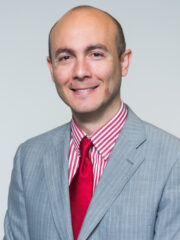
Cristian Pradera, ATM Modernization Planning Coordinator, SESAR Deployment Manager (SDM)
Cristian Pradera is an aeronautical engineer specialized in rocket engines, graduated in the Polytechnic University of Madrid in 2008. He started his professional career as a consultant in ENAIRE, working for 5 years in the Planning and Strategy division, where he contributed to the development of ENAIRE’s business plan and to the elaboration of the European ATM Master Plan under the SJU. He then joined EUROCONTROL for 3 years, working in the ATM Master Plan Unit and then he moved to the SESAR Deployment Manager in 2017, where he became the planning manager, in charge of the planning activities related to the implementation of the Common Projects, DataLink Services and ADS-B Out.
Panelists

Steve Bradford, Chief Architect, FAA
Steve Bradford is chief scientist for architecture and NextGen development, Office of NextGen, at the Federal Aviation Administration. He is the chair of the technical review board that monitors technical decisions related to investments and enterprise architecture. He is the FAA lead for the FAA/NASA Research Transition Team (RTT) process that supports collaboration between the FAA and NAS on ATM related activities. A current focus of the RTT process is collaboration on UAS-in-the-NAS supporting vehicles operating in ATM, and UAS traffic management supporting operation in uncontrolled airspace, and AAM. The RTT process depends on direct partnership with the UAS industry and provides many opportunities to look at new technology options for both new entrants and traditional manned aircraft operations.
He also has a leading role in NextGen’s international engagement activities with SESAR Joint Undertaking and has led several cooperative international efforts with EUROCONTROL He was a member of the International Civil Aviation Organization’s (ICAO) technical team that authored the Global Air Navigation Plan, the past U.S. panel member to the ICAO Air Traffic Management Requirements and Performance Panel, and the chair for the ICAO GANP Study Group.

Kevin Grimm, Data Comm Chief System Engineer, FAA
Since 2012, Kevin Grimm has served as chief engineer for the FAA Data Communications (Data Comm) program which has introduced Controller Pilot Data Link Communications (CPDLC) service to FAA towers and en route centers. He previously served as the chief engineer for several FAA Oceanic automation programs including Multi-Sector Oceanic Data Link (MS-ODL) which introduced CPDLC to FAA oceanic airspace and advanced technologies and oceanic procedures which entirely replaced oceanic automation with an integrated system combining CPLDC, ADS-C, electronic flight strips and an advance conflict probe with flight data processing.
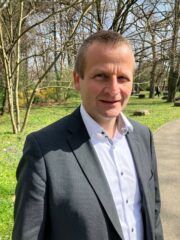
Thomas Koerber, Senior Datalink Expert, SDM/Lufthansa
Thomas Koerber is an engineer with almost 20 years of experience in aviation. He started his career in Lufthansa as system engineer for flight deck communication and datalink. In 2018 he changed to the Lufthansa ATM development team and worked in SESAR related fleet equipage projects. Since 2018 he is seconded to the SESAR Deployment Manager where he worked in various projects like ADS-B deployment and datalink deployment. In 2023 he co-led the “Multilink Implementation and Air/Ground Application (ADS-C/EPP)” working group.
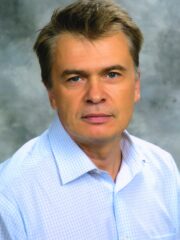
Bernhard Haindl, Principal Scientist, Frequentis AG
Bernhard HAINDL is a principal scientist at Frequentis and has almost 30 years of experience in the design and development of aeronautical communication systems. His area of expertise encompasses aeronautical air/ground communications, IP networks, and voice over IP. Currently he is responsible for the architecture and the specifications of the future terrestrial data link LDACS.
Bernhard contributes to international research and development projects in the field of data communications and participate actively on several aviation standards committees at Eurocae and ICAO. (e.g., ICAO WG-I, dealing with ATN IPS or ICAO Project Team-Terrestrial addressing LDACS).
He received his Master of Science in digital communications systems and a doctorate in electrical engineering from University of Technology Vienna. He has several patents in the field of aeronautical communications.
Technical Program
Sponsors and Exhibitors Reception
17:30 – 18:30
Rivanna D
Evening Keynote, “NASA Vision for Future Aviation Operations and Safety Transformation”
Akbar Sultan, Director, Airspace Operations and Safety Program (AOSP), NASA
Mr. Sultan will provide a short career introduction into leadership journey at NASA for the future aviation leaders. This will be followed by the NASA mid-century vision on transformation of aviation operations and safety, from NextGen towards the ambitious mid-century Sky for All vision, a potentially revolutionary approach for safe and efficient air traffic management of future vehicles. NASA Sky for All vision will further the transition to a digital service-oriented architecture that is prognostic, collaborative, scalable, and dynamically adaptive for all future users.
18:30 – 19:30
Rivanna D
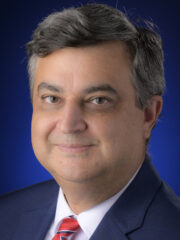
Akbar Sultan is director of NASA’s Airspace Operations and Safety Program (AOSP), responsible for NASA’s aviation operations and safety research portfolio of more than $120 million across four research centers. The Airspace Operations and Safety Program (AOSP) works with the Federal Aviation Administration (FAA) and industry and academic partners to conceive and develop Next Generation (NextGen) air transportation system technologies to further improve the safety of current and future aircraft moving through the National Airspace System.
NextGen activity includes research to enable service-oriented architecture and integrated demand management operational efficiencies in the surface, terminal, en route, and oceanic operational domains for traditional aircraft, unmanned aircraft systems (UAS), and future autonomous systems. The program is also responsible for aviation safety research in the areas of aircraft state awareness, prevention of aircraft loss of control, verification and validation of complex systems, prognostic safety through data mining, and real-time system-wide safety assurance. A key focus is on developing and demonstrating enhanced systems that will enable routine access to the airspace by emergent users of UAS, especially in support of evolving urban air mobility concepts.
Sultan is the NASA co-lead on the NASA/FAA Research Transition Teams, which are organized to enable efficient and effective transition of NASA research into FAA implementation roadmaps. He is also the NASA liaison to the multiagency NextGen Interagency Planning Office and leads the program’s international collaboration activities. Sultan has 20 years of professional experience in aerospace and air traffic management research and development.
Previously, Sultan was a NASA liaison to the Joint Planning and Development Office in the ongoing development of NextGen, where he led the development of NextGen operational improvements. He also served as the Software Configuration, Release, and Verification and Validation Manager for the Terminal Radar Approach Control automation system at NASA’s Ames Research Center in California. There he was responsible for gaining FAA certification for NASA prototype systems in operational field trials.
Sultan received two Bachelor of Science degrees – in mechanical engineering and in aeronautical science and engineering – from the University of California Davis, and a Master of Science in aerospace engineering from San José State University.

